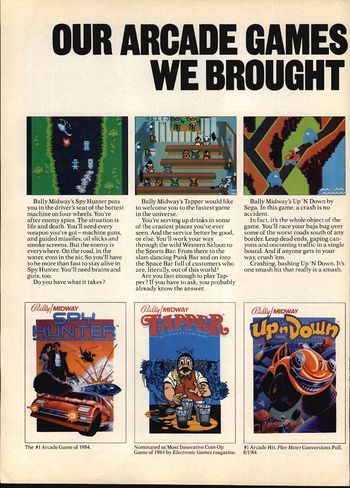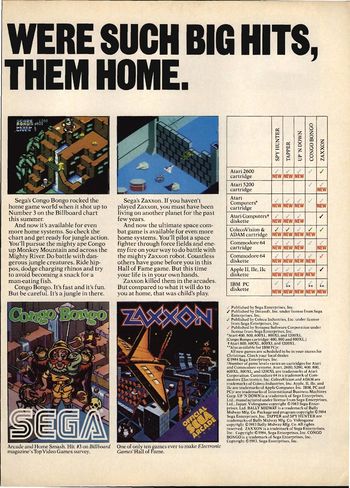Sega
| SEGA | ||
|---|---|---|
 | ||
| Founded | 1940 | |
| Closed | ||
| Headquarters | Ōta, Tokyo, Japan | |
| Manager | ||
| Employees | ||
| Key People (choice) | David Rosen | |
| Turnover | ||
| Sector | Video and computer games | |
| Website | http://www.sega.com/ | |
| Information | ||
SEGA (from SErvice GAmes and the full title being Sega Corporation) is a video game software and hardware developer, publisher and distributor. SEGA created many home video consoles from 1983-2001, which competed directly with Commodore home computers. However the name is more widely associated with the C64 due to the many video arcade titles that were ported and the compatibility of some home console hardware. This article covers that association.
History[edit | edit source]
Service Games was established in 1940 in Honolulu, Hawaii, developing and distributing slot machines. By 1965, the company merged with Rosen Enterprises and was renamed Sega. Prospering heavily from the arcade gaming boom between the late-1970s to mid-1980s, many of their titles became highly popular. As the video arcade machines were based upon common CPU architecture (for example Zilog Z80 and Motorola 68000), many of these games were highly suitable for porting to the home computer market. However, Sega commonly licensed titles to third party games publishing houses and development teams instead of becoming directly involved.
C64 Game Chronology[edit | edit source]
The titles that were coded for the C64 are in Table 1.
Software Advertisement[edit | edit source]
 |
 |
Hardware Compatibility[edit | edit source]
The controllers of the Sega Master System used the RS-232 DE9 standard connector, which made them Commodore compatible. The second fire button was also supported in a few games (such as Last Ninja Remix). The Sega Light Phaser was an interchangeable accessory with the Commodore Light gun.
Warning:[edit | edit source]
The controllers of the Sega Mega Drive also use the RS-232 DE9 standard connector, however the time signals that are sent to the CPU can cause hardware damage. They are therefore not Commodore-compatible.
References[edit | edit source]
External links[edit | edit source]
| Wikipedia: Sega |
| Wikipedia: Sega |
- Eurogamer - The Rise and Fall of Sega Enterprises General company history
- Sega Retro - Commodore 64 Games List of games ported to the Commodore 64